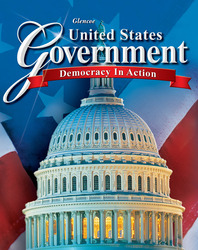United States Government: Democracy in ActionUnit 9:
Political and Economic SystemsBig Idea Activity — Lesson Plan <a onClick="window.open('/olcweb/cgi/pluginpop.cgi?it=jpg::::/sites/dl/free/0078799821/680642/big_idea.jpg','popWin', 'width=NaN,height=NaN,resizable,scrollbars');" href="#"><img valign="absmiddle" height="16" width="16" border="0" src="/olcweb/styles/shared/linkicons/image.gif"> (10.0K)</a> <a onClick="window.open('/olcweb/cgi/pluginpop.cgi?it=jpg::::/sites/dl/free/0078799821/680642/big_idea.jpg','popWin', 'width=NaN,height=NaN,resizable,scrollbars');" href="#"><img valign="absmiddle" height="16" width="16" border="0" src="/olcweb/styles/shared/linkicons/image.gif"> (10.0K)</a>
Is free trade good for the U.S. economy?
Assignment: Trade Agreement Ads
Students will create an advertisement for or against a U.S. trade agreement. Assignment Task List
Step 1: Students will review the purposes of trade.  <a onClick="window.open('/olcweb/cgi/pluginpop.cgi?it=jpg::::/sites/dl/free/0078799821/680643/iwb_logo.jpg','popWin', 'width=NaN,height=NaN,resizable,scrollbars');" href="#"><img valign="absmiddle" height="16" width="16" border="0" src="/olcweb/styles/shared/linkicons/image.gif"> (8.0K)</a> Project the StudentWorks Plus Online, pages 732–733 on the whiteboard. Call on a student to come to the board and underline the three purposes of trade. Students’ answers should be similar to the following: <a onClick="window.open('/olcweb/cgi/pluginpop.cgi?it=jpg::::/sites/dl/free/0078799821/680643/iwb_logo.jpg','popWin', 'width=NaN,height=NaN,resizable,scrollbars');" href="#"><img valign="absmiddle" height="16" width="16" border="0" src="/olcweb/styles/shared/linkicons/image.gif"> (8.0K)</a> Project the StudentWorks Plus Online, pages 732–733 on the whiteboard. Call on a student to come to the board and underline the three purposes of trade. Students’ answers should be similar to the following:
- to obtain goods and services that a country cannot produce
- to take advantage of comparative advantage caused by specialization
- to create jobs
|
 <a onClick="window.open('/olcweb/cgi/pluginpop.cgi?it=jpg::::/sites/dl/free/0078799821/680642/BL.jpg','popWin', 'width=NaN,height=NaN,resizable,scrollbars');" href="#"><img valign="absmiddle" height="16" width="16" border="0" src="/olcweb/styles/shared/linkicons/image.gif"> (0.0K)</a> Differentiated Instruction Reinforce the concept of specialization and comparative advantage. Ask three students to take blank sheets of paper and (a) cut them into fourths, (b) write the word specialization on each fourth, and (c) fold the fourths in half twice. At the same time, have a group of three students work together—each doing one of the three tasks. At the end of one minute, have the three students working separately and the three students working together count the number of folded papers they have. The group of three should have many more finished products. Explain that this is an example of specialization and efficiency, which leads to a comparative advantage in the product. <a onClick="window.open('/olcweb/cgi/pluginpop.cgi?it=jpg::::/sites/dl/free/0078799821/680642/BL.jpg','popWin', 'width=NaN,height=NaN,resizable,scrollbars');" href="#"><img valign="absmiddle" height="16" width="16" border="0" src="/olcweb/styles/shared/linkicons/image.gif"> (0.0K)</a> Differentiated Instruction Reinforce the concept of specialization and comparative advantage. Ask three students to take blank sheets of paper and (a) cut them into fourths, (b) write the word specialization on each fourth, and (c) fold the fourths in half twice. At the same time, have a group of three students work together—each doing one of the three tasks. At the end of one minute, have the three students working separately and the three students working together count the number of folded papers they have. The group of three should have many more finished products. Explain that this is an example of specialization and efficiency, which leads to a comparative advantage in the product. |
Step 2: Students will review the trading partners of the United States.  <a onClick="window.open('/olcweb/cgi/pluginpop.cgi?it=jpg::::/sites/dl/free/0078799821/680643/iwb_logo.jpg','popWin', 'width=NaN,height=NaN,resizable,scrollbars');" href="#"><img valign="absmiddle" height="16" width="16" border="0" src="/olcweb/styles/shared/linkicons/image.gif"> (8.0K)</a> Project the table from page 733 on the whiteboard. Have students study it to answer the following questions: <a onClick="window.open('/olcweb/cgi/pluginpop.cgi?it=jpg::::/sites/dl/free/0078799821/680643/iwb_logo.jpg','popWin', 'width=NaN,height=NaN,resizable,scrollbars');" href="#"><img valign="absmiddle" height="16" width="16" border="0" src="/olcweb/styles/shared/linkicons/image.gif"> (8.0K)</a> Project the table from page 733 on the whiteboard. Have students study it to answer the following questions:
- From which three countries does the United States import the most? (China, Canada, Mexico)
- To which three countries does the United States export the most? (Canada, Mexico, China)
- Does the United States have a trade surplus or a trade deficit with these countries? (trade deficit)
- Which countries import products from the United States as one of their three largest trade partners? (Japan, South Korea, Brazil, Jamaica)
- Which countries export products to the United States as one of their three largest trade partners? (Japan, South Korea, China, Brazil, Jamaica)
|
Step 3: Organize students into four groups. One group will be pro-NAFTA; the second group will be anti-NAFTA. A third group will be pro-CAFTA-DR; the fourth group will be anti-CAFTA-DR. Each group will create storyboards for a short television advertisement promoting their group’s position. Step 4: Students will gather and summarize online and print information relevant to their group’s position. Tell them to take notes and prepare an outline as a guide to promote their position in the advertisement. In addition, they should prepare counterarguments to refute the opposition’s side in their advertisement. Step 5: Groups will write the advertisement by creating at least eight storyboards that consist of one image per storyboard. Provide large pieces of paper or posterboard for groups’ final projects.  <a onClick="window.open('/olcweb/cgi/pluginpop.cgi?it=jpg::::/sites/dl/free/0078799821/680642/BL.jpg','popWin', 'width=NaN,height=NaN,resizable,scrollbars');" href="#"><img valign="absmiddle" height="16" width="16" border="0" src="/olcweb/styles/shared/linkicons/image.gif"> (0.0K)</a> Differentiated Instruction <a onClick="window.open('/olcweb/cgi/pluginpop.cgi?it=jpg::::/sites/dl/free/0078799821/680642/BL.jpg','popWin', 'width=NaN,height=NaN,resizable,scrollbars');" href="#"><img valign="absmiddle" height="16" width="16" border="0" src="/olcweb/styles/shared/linkicons/image.gif"> (0.0K)</a> Differentiated Instruction <a onClick="window.open('/olcweb/cgi/pluginpop.cgi?it=jpg::::/sites/dl/free/0078799821/680643/iwb_logo.jpg','popWin', 'width=NaN,height=NaN,resizable,scrollbars');" href="#"><img valign="absmiddle" height="16" width="16" border="0" src="/olcweb/styles/shared/linkicons/image.gif"> (8.0K)</a> Project Graphic Organizer Transparency 17: Chain-of-Events Flowchart. Demonstrate how to sequence the stages of an event in the chart. <a onClick="window.open('/olcweb/cgi/pluginpop.cgi?it=jpg::::/sites/dl/free/0078799821/680643/iwb_logo.jpg','popWin', 'width=NaN,height=NaN,resizable,scrollbars');" href="#"><img valign="absmiddle" height="16" width="16" border="0" src="/olcweb/styles/shared/linkicons/image.gif"> (8.0K)</a> Project Graphic Organizer Transparency 17: Chain-of-Events Flowchart. Demonstrate how to sequence the stages of an event in the chart.
|
Step 6: Students will present their advertising storyboards to the class. Have groups peer-assess one another’s advertisements using the following rubric:
___ detailed research that shows a deep understanding of the subject
___ multiple sources used
___ excellent use of planning time
___ peer feedback incorporated
___ well-thought-out and insightful selection of information
___ eye catching with exceptional design, color, and fonts
___ images used demonstrate creativity
___ extremely persuasive
___ prominently displayed slogans or headings
___ very well written, interesting, and informative copy
___ no grammar or punctuation errors  <a onClick="window.open('/olcweb/cgi/pluginpop.cgi?it=jpg::::/sites/dl/free/0078799821/680642/big_idea.jpg','popWin', 'width=NaN,height=NaN,resizable,scrollbars');" href="#"><img valign="absmiddle" height="16" width="16" border="0" src="/olcweb/styles/shared/linkicons/image.gif"> (10.0K)</a> <a onClick="window.open('/olcweb/cgi/pluginpop.cgi?it=jpg::::/sites/dl/free/0078799821/680642/big_idea.jpg','popWin', 'width=NaN,height=NaN,resizable,scrollbars');" href="#"><img valign="absmiddle" height="16" width="16" border="0" src="/olcweb/styles/shared/linkicons/image.gif"> (10.0K)</a>
After all of the advertisements have been presented, have students discuss this question: Is free trade good for the U.S. economy?
 |  |





















